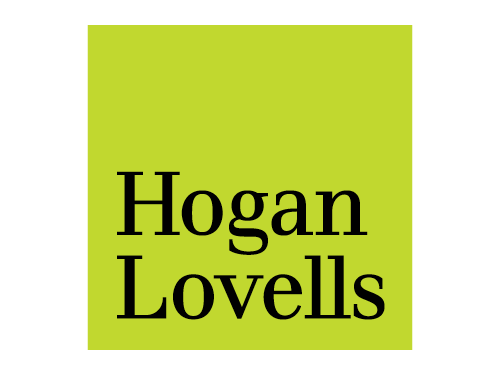Now Reading: Q&A with CallRail: Is your law firm using these call tracking features?
-
01
Q&A with CallRail: Is your law firm using these call tracking features?

Q&A with CallRail: Is your law firm using these call tracking features?
Born and raised in Central Texas, Zac has spent nearly past 15 years in Austin – 10 of which he has worked in marketing and sales roles. Currently he is serving as the Senior Product Marketing Manager for the Legal Vertical for CallRail, where he gets to acutely focus on working with our company’s legal customers to understand and meet the needs of law firms looking to improve their marketing ROI.
Apoorva Mehta, Executive Manager at Legal Desire had a little chat with Zac about CallRail and why should law firms be using it.
- Why should law firms use call tracking?
The benefits of call tracking for a firm’s bottom line are simply undeniable. By assigning a unique phone number for each marketing campaign, you can tell calls from each initiative apart. When you know which campaigns are driving more qualified leads, you’re able to use that data to optimize your marketing initiatives so you can maximize your firm’s lead generation, your conversion rates, and each campaign’s ROI.
Many firms use this software to improve their phone call experiences as well as client communication and billing. In fact, 84% say their law firm has been able to waste less time on administrative tasks and 83% say their firm has been able to bill more accurately since they started using intake software, according to CallRail’s research.
- What are the top call tracking features every firm should be using?
With a host of diverse features, it’s hard to pick the tops. But, here are four call tracking features your firm should prioritize:
Call recording: Using call recordings, small law firms can analyze their skills and tactics to improve conversion rates. Call recordings also serve as valuable customer service assessment and training tools to ensure communications are always top-notch.
Call notifications: Call notifications provide immediate context about the person contacting your business, so you know exactly who called and how they found you. In some cases, a missed call is a missed opportunity, so with real-time email notifications or browser notifications, you can be on top of your call game and never miss a lead again.
Call log: CallRail’s call log feature enables you to quickly identify returning callers, know the reason they’re calling, and identify peak call hours so that you can staff accordingly. By drilling-down to view full caller ID information and gather key details like a call’s duration and the sources, you have the ability to shorten the feedback loop so you can make better marketing decisions faster than ever.
Source-level tracking: This feature allows you to understand each buyer’s on- and offline journey to your firm. Allowing you to use a single, unique tracking phone number for each marketing campaign you want to measure, you can know exactly which channels in multi-touch and integrated marketing campaigns are your best contributors to driving ROI.
- What kind of data can a firm garner from call tracking?
According to a recent CallRail report, almost all firms that use intake software like call tracking have reaped major marketing benefits with 99% reporting that their firm has been able to make better marketing decisions since adopting.
Call tracking monitors your firms’ online marketing activity like PPC ads, emails, social media posts, and keywords. Meanwhile source-level tracking follows the calls from offline marketing pieces: ads, mailers, brochures, billboards, and more. Long story short, if you can put a phone number on it, you can track it!
- What are law firms missing out on without call tracking?
A customer’s first attempt to get in touch with your firm makes a lasting impression. The time it takes you to respond can make or break their decision to pursue business with you. In fact, research on lead response times found that conversion rates are 8x greater when responded to within 5 minutes of outreach.
Not to mention, slow response times result in major revenue losses to the tune of $199,265. Firms lose an average of 46 clients per year due to slow response times, according to the latest data from CallRail.
With call tracking, you can set up call notifications, which provide immediate context about the person contacting your business, so you know exactly who called and how they found you. Additionally, features like outbound call tracking shows which calls still need to be returned, enabling you to call back right away from your tracking number – before your potential new client signs the deal with another firm.
- How does using call tracking help law firms achieve their overarching business goals?
Start by aligning your marketing goals with your desired business outcomes. Your ultimate goal is always going to bring in more clients and revenue. But, when you take your big-picture business goals and ladder smaller, more specific marketing objectives up to support it, you’re able to make manageable step-by-step progress toward your larger plan.
The key here is understanding what marketing is working so that you can invest time, money, and other resources in the right place – and that’s where call tracking comes into play. As a small firm owner, you need to make sure you’re getting the best possible insight into which online and offline marketing efforts are driving potential clients to contact you, and that’s where solutions like call tracking and form tracking can help.
For example, call tracking software attaches a unique, dedicated phone number to each of your online or offline marketing tactics (e.g., Google Ads, billboards) that all ring into your main business line while tracing the source of each call. That way, you can pinpoint the source of your incoming calls to determine which tactics are working best and invest more of your marketing budget there. Similarly, form tracking shows you which ads and keywords prompted people to fill out a form on your website. With this data in hand, you’ll be spending more efficiently and generating more quality leads in no time!
To learn more about how call tracking works and key features to look for in a call tracking tool, check out CallRail’s Content Hub.








